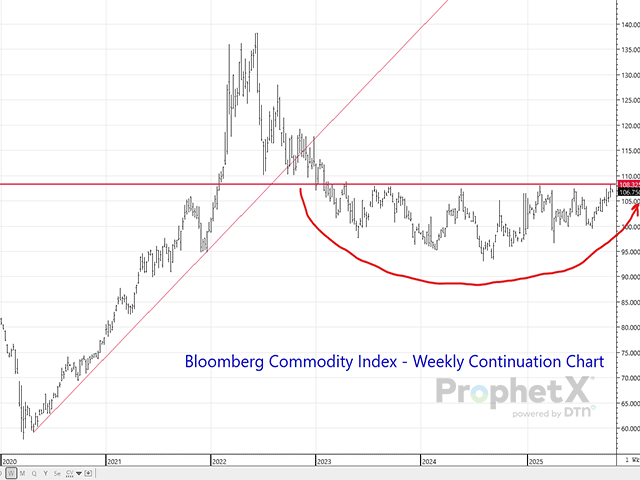
May the holidays bring the focus back on what truly is important in life. With that perspective helping to offset the daily stresses one must navigate.

May the holidays bring the focus back on what truly is important in life. With that perspective helping to offset the daily stresses one must navigate.

The break in energy prices in December may have contributed to short-term pain for the oilseed complex but it also provides an opportunity to hedge fuel prices going into 2026.

Record-setting U.S. corn export sales are making it somewhat challenging for Canada to compete, while stronger Western Canadian feed production limits the need.

Final production totals from Statistics Canada confirmed yields rose dramatically from the September estimates for most Western Canadian crops while row-crop yields declined thanks to an Eastern Canadian drought.

With corn export commitments to date at a record pace already, what would happen if China returned to the market?

With the help of surging heating oil (ultra-low sulfur diesel) prices, soybean oil appears to be breaking higher from support.

A combination of technical and fundamental clues suggests the worst should be behind the cattle market with it now time to try to rebuild confidence along with price.

The multiple bullish technical signs that have developed in soybeans are sure to attract additional trader attention.

Amid the debate over the level of U.S. government debt, could inflation exceeding the 2% target be part of the solution?

Is it time for money to flow out of the overbought stock market and into cheap commodity markets as valid concerns about the former increase?

Record canola domestic use not only diminishes the impact of slow exports caused by Chinese tariffs, but it is also the best use of the crop in the long run. It should be celebrated.

With the attention that gold is receiving lately, it may be making the trade question what fair value of the various crops should be, regardless of crop size.

With soybean oil used in biofuel production set to soar in 2025-26 (assuming a short government shutdown), there is no room for exports to see a repeat of last year's surge. Yet the market may be allowing it.

Very strong new-crop corn export sales to date show what is possible with a diversified customer base, something the soybean market should focus on.

Statistics Canada's second model-based production estimates came in stronger than the Aug. 28 projections for the most part. Only oats and corn had minor reductions.

Even though headlines suggest ending stocks of many of the principal field crops fell sharply compared to the previous year, in reality, the totals were above recent estimates, just well-below now-inflated previous years.

Very strong new-crop corn export sales to date, combined with slow farmer sales and disease and late-season drought concerns, may result in the Aug. 12 contract low for December corn marking the seasonal low as well.

Statistics Canada's production estimates came in a bit stronger than other estimates for all wheat and corn while being below others for barley. Canola, soybeans and oats fell within expected ranges.

With the UAE's track record of being an intermediary in canola trade between Canada and China amid official disruptions, they may play a key role again during the anti-dumping duty period.

The soybean market has finally shown signs of concern over the sharp drop in acres and the heightened risk to supply resulting from it.
DIM[2x3] LBL[blogs-canada-markets-list] SEL[[data-native-ad-target=articleList]] IDX[2] TMPL[news] T[]
DIM[2x3] LBL[blogs-canada-markets-list-2] SEL[[data-native-ad-target=articleList]] IDX[5] TMPL[news] T[]